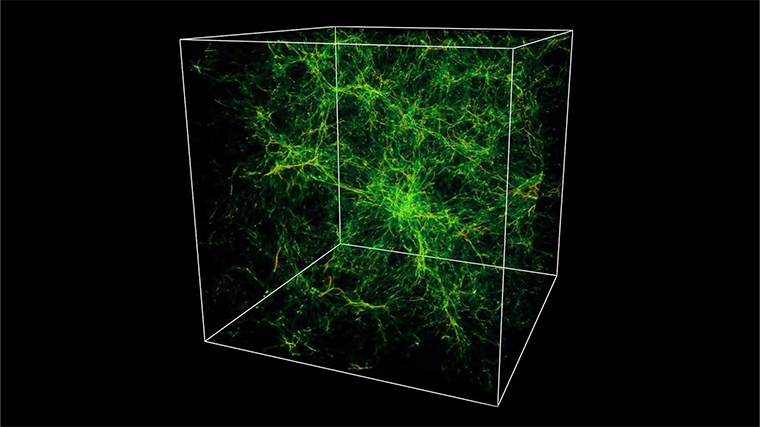1. The speed of light in any medium is less than in a vacuum, which allows physical objects to move faster than light in this medium but slower than in a vacuum. This is observed, for example, in nuclear reactors, where electrons knocked out by gamma rays move in water faster than light in this medium.
The theory of relativity states that the speed of light is constant only in a vacuum. Light slows down in other media, like glass or diamond, causing refraction. For example, light moves 1.49 times slower in glass and more than twice as slowly in a diamond. Other particles can travel faster than light in such environments.
This was demonstrated in Cherenkov experiments, where electrons accelerated by gamma rays exceeded the speed of light in a luminescent liquid, causing the emission of photons. This process is analogous to the formation of a shock wave during supersonic flight or the movement of an electron faster than other particles surrounding it in a crowd, with each collision resulting in the emission of photons.
2. The Cherenkov effect, initially discovered in transparent liquids, was subsequently noticed in the ocean depths. Although photons from the surface do not reach as deep, ultrafast particles from decaying radioactive elements produce a glow that can be noticeable to local inhabitants.
3. The Universe is expanding rapidly, like an inflating balloon with stars drawn on it. The farther the points (stars) are located from each other, the faster the distance between them increases. Galaxies, the distance between which is growing more quickly than the ratio of the speed of light to the Hubble constant (66.93 ± 0.62 km/s per Megaparsec), will move away from each other faster than the speed of light.
4. Philosophically speaking, darkness is the absence of light, and they do not have speed in the usual sense. However, shadow, as a form of darkness, can appear to move very quickly. For example, if you use your hands to create a shadow in the shape of a dog on a wall and move your fingers slightly, the shadow on the wall will carry a greater distance than the actual movement of your finger. If we cast a shadow on a distant object, such as the Moon or an imaginary screen, even a tiny movement can cause the shadow to move a long distance, creating the illusion of fast movement.
5. There are examples of apparent ‘superluminal’ motion that do not violate the theory of relativity:
a. The intersection point of rulers connected at an acute angle (like scissors) can move at very high speeds.
b. A laser beam that creates an arc over a long distance can travel across the screen faster than the speed of light. In both cases, there is no transfer of information or material objects.
Why can’t light travel faster?
Photons, particles of light, can travel at the speed of light because they have no mass. In contrast, particles with mass, such as electrons, become heavier when accelerated and, therefore, cannot reach the speed of light. Roger Rassoul of the University of Melbourne points out that objects with mass become more severe as speed increases, making further acceleration more difficult. Photons, having no mass, do not need acceleration and immediately move at their maximum speed, spreading in waves at the moment of their birth.
Banner image: Generated by AI ChatGPT
Image credit:
https://drive.google.com






